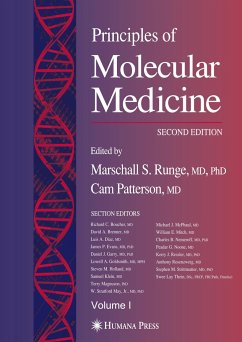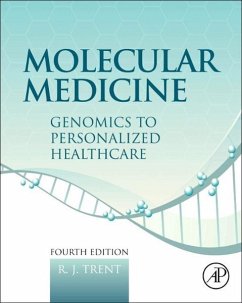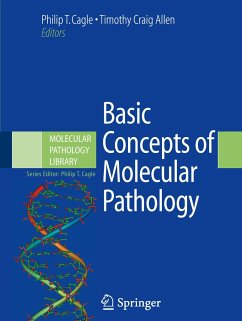
Introduction to Molecular Medicine

PAYBACK Punkte
38 °P sammeln!
This updated and revised third edition of Introduction to Molecular Medicine explains the fundamental principles vital to an understanding of the human genome, gene regulation and expression, and genetic engineering. Principles are then applied to the diagnosis and treatment of human disease in infectious diseases, inherited genetic diseases, the immune system and blood cells, cancer, and public health. Fully rewritten and with dozens of new illustrations, the Third Edition presents the basics of molecular biology and its impact on medicine in a concise, conversational format. Each chapter begins with an overview and ends with a summary. This edition also contains new discussions on the human genome project and genetic engineering with updated genetic maps.Ross' Introduction to Molecular Medicine remains a must-have information source for all physicians, residents, and medical students, as the books stellar reviews demonstrate:"Well written and...presented in a style that is eminently readable...as an introduction to the applications of molecular biology and clinical medicine, Dr. Ross' book is recommended...of particular interest to pathology and clinical medicine residents."Archives of Pathology on the Second Edition"will appeal to students and clinicians who will appreciate an introduction to this complicated field which unlike others, is easy and good fun to read."Annals of Oncology.
This book continues the story of a new field called molecular medi cine. The first edition appeared 10 years ago in a previous millennium. At that time cloning a gene was cutting edge research; now gene cloning is a high school science fair project. The complete sequencing of the human genome was finished last year; cloning a human is a likely (and very controversial) event for 2002. The tools of molecular medicine have become very powerful and automated; DNA on a chip and microarrays allow us to probe large parts of the genome and its function. The speed of sequencing DNA has increased about 100,0- fold over the decade since the first edition of this book was published. Following the great improvements in technology, DNA and molecular research have a rapidly deepening impact on human medicine. Molec ular therapies including DNA vaccines, antisense, and gene transplan tation are undergoing clinical trials.














